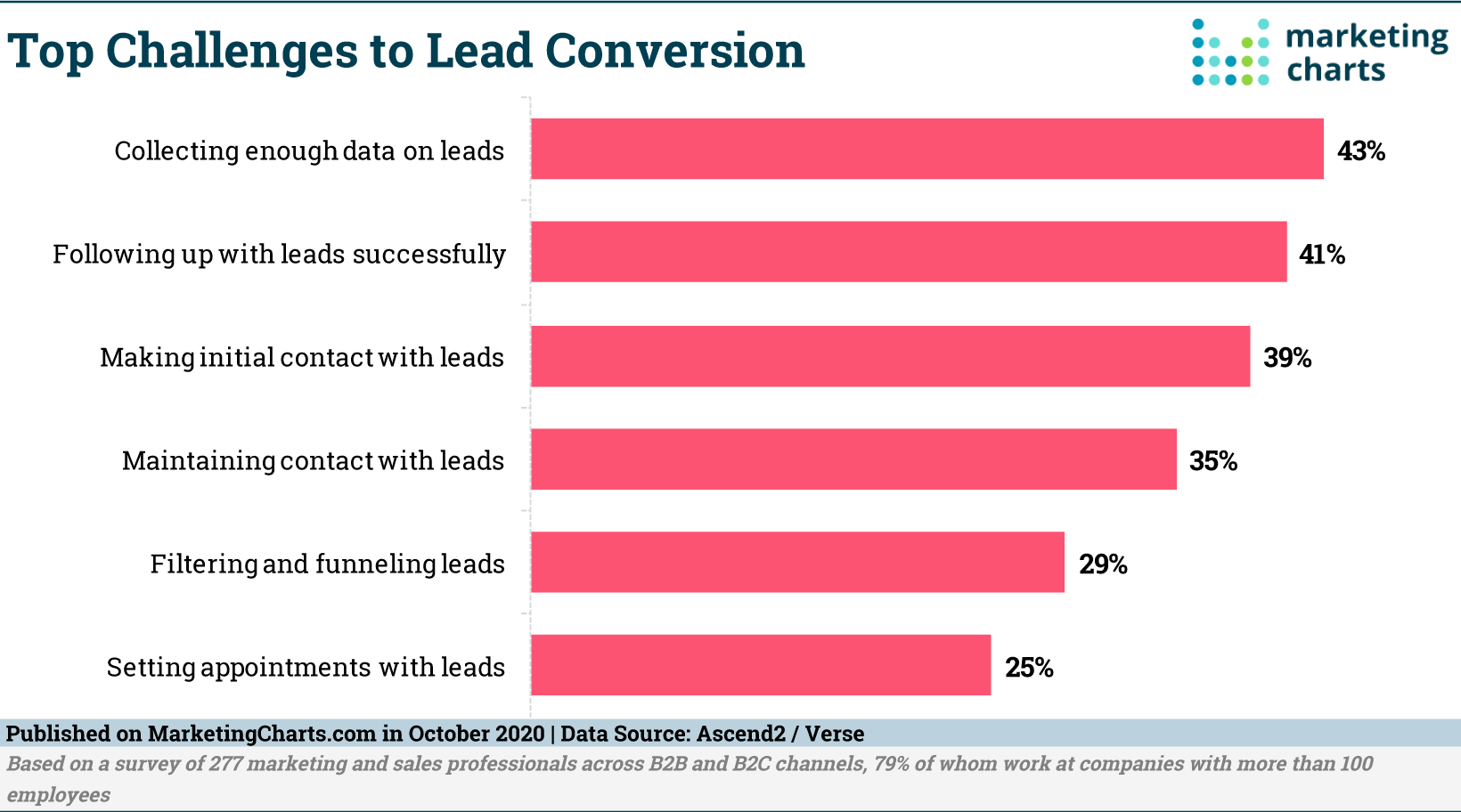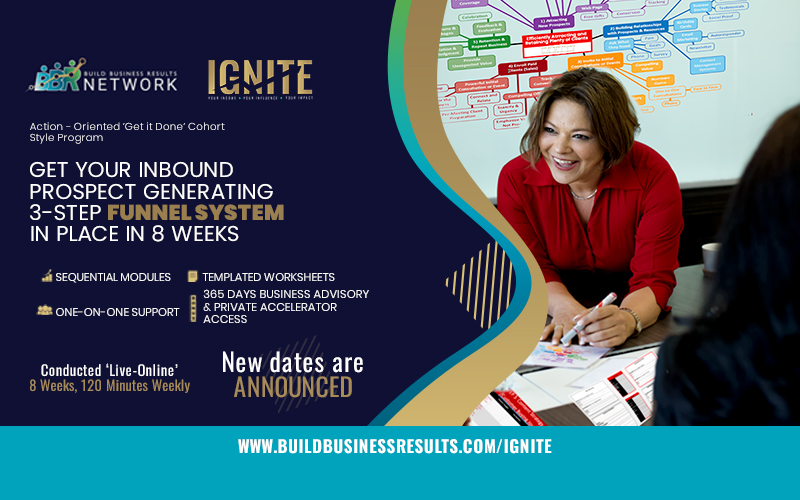Where Are Marketers Struggling with Lead Conversion?

Often, marketers that struggle with sales aren’t dealing with a lack of leads – the problem is a lack of conversions. If your sales are lagging and you’re ready to turn things around, use this list to troubleshoot possible reasons your leads aren’t converting:
Before we get into some of the most common lead conversion problems, keep this in mind, tackling a problem like low conversions might be a minor tweak, or it might mean a major overhaul. Tracking your company’s key metrics makes it far easier to identify and fix weak points in your overall strategy, so always go back to your numbers to check your assumptions.
Don’t be afraid to enlist expert help if you need it. You may be in business for yourself, but you don’t have to do it by yourself.
See you on the action-field,
Raksha Sukhia, SMB Growth Expert,
Founder BBR Network. #bbrnetwork
One-quarter of sales and marketing professionals express some level of dissatisfaction with their lead-to-sales conversion rate. So says a new report [download page] from Ascend2 and Verse, which also found that one of the biggest challenges to successful lead conversion was collecting enough data on leads.
Indeed, some 43% of the more than 270 marketing and sales professionals from both B2B and B2C companies surveyed cited collecting enough data on leads as one of their greatest barriers to converting leads. Another 41% of respondents said that following up with leads was standing in the way of successful lead conversion.

Salespeople and marketers also find making initial contact with leads (39%) and maintaining contact with leads (35%) challenging, while fewer are facing hurdles such as filtering and funneling leads (29%) and setting appointments with leads (25%).
3 in 10 Companies Have Lead Conversion Staff
For the most part, the biggest challenges companies are facing when it comes to converting leads have a very strong human element. While lack of skills poses a problem in other areas of sales and marketing, time is a factor in the area of lead conversion, with 44% of respondents saying that the biggest problem with their existing lead conversion approach is that their staff is too busy to follow up.
Only 30% say that they have a dedicated staff for lead conversion and 36% have an in-house call or contact center. Instead, the responsibility falls to sales, with close to half (48%) saying their sales staff is tasked with handling lead conversion.
Use of Automation Low
Close to 6 in 10 companies rely on either customer built software (29%) or third-party software (27%) to handle the lead conversion process. That said, only one-quarter are currently using marketing automation software specifically for lead conversion. Additionally, although earlier research shows that very few B2B marketers are satisfied with their lead nurturing campaigns, this most recent research found that only 23% of respondents are using software specific to engagement, qualification or nurturing.
Email marketing automation software (44%) appears to be the software used most often, followed by CRM (39%). However, research from Validity found that data from CRM is often missing or incomplete, while others have encountered duplicate data.
What Are the Costs?
When the sales and marketing professionals were asked to consider the greatest costs associated with their lead conversion challenges, more than half (54%) alluded to missed opportunities for revenue, while half said that the challenges resulted in wasted staff time and resources. Just more than one-third (36%) report having wasted budget because of the challenges.
And, while fewer respondents felt that it has led to lower employee morale (29%) and contention between marketing and sales (29%), these costs should not be overlooked, especially considering the long-standing problem of marketing and sales alignment.
To read more, the full report can be found here.
About the Data: Findings are based on a survey of 277 marketing and sales professions representing both B2B and B2C organizations.
Related Article
What’s a Good Landing Page Conversion Rate?
Business Agility Is the New Norm. Do You Have What It Takes?
Tags
#BBR Network, #Profitability, #Small Business Growth, #Small Business Marketing and Sales, #SMB, #SME, B2B, Build Business Results, Build Business Results (BBR), Build Business Results (BBR) Mastermind., Build Business Results (BBR) Network Business Advisory, Business Tips, Email Frequency, Email Marketing, Marketing, Raksha Sukhia











